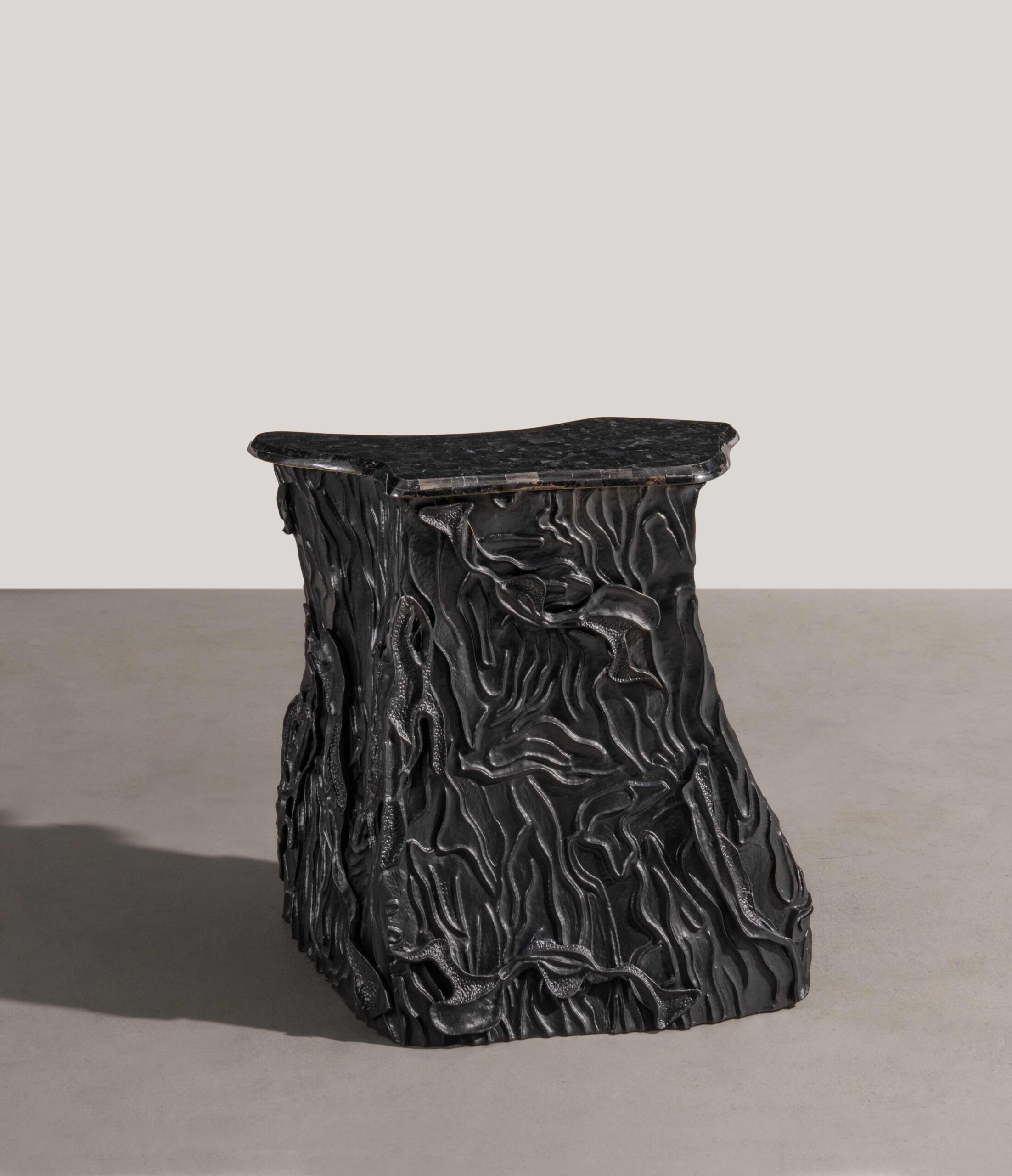‘Culture is so interwoven with craft in the Global South that they are almost impossible to untangle,’ says Rue Kothari. ‘Materials are guided by past rituals, heritage techniques and natural resources’
 Photography by Frank Sperling featuring documenta fifiteen: Atis Rezistans | Ghetto Biennale, Installationsansicht, St. Kunigundis, Kassel, 14. Juni 2022
Photography by Frank Sperling featuring documenta fifiteen: Atis Rezistans | Ghetto Biennale, Installationsansicht, St. Kunigundis, Kassel, 14. Juni 2022
Words by Rue Kothari
In the world of theatre, a set piece is a physical structure: walls, platforms, furniture. Each element exists to define the spatial environment of the performance. Within that, the ‘actors’ play with props – that help to establish the setting and enhance the narrative. In the world of art and design, it’s not so different. Our choices, the assemblage of decoration that we place around us, tell its own story – of our life, our aspirations and, most importantly, our culture.
Culture is so interwoven with craft in the Global South that they are almost impossible to untangle. Materials are guided by past rituals, heritage techniques and natural resources. Expressions of colour and scale are often amplified – a clear statement of identity, a clarity of intent that is designed to make a play for the spotlight. As emerging creatives take centre stage, and all eyes are on ‘what’s new? What’s next’?’, there is a yearning to redefine the narrative. African design is often marred by negative perceptions of colonialism, when in reality there is real heterogeneity that makes the Western design scene seem like vanilla ice-cream at the interval.
Craft is used as a positive political tool, bringing designers from South America, Africa and India to the table, with their own ideas, typologies and processes. You need only look at last year’s Venice Biennale (itself a stage for discourse and discontent), where Indonesian collective ruangrupa’s controversial piece for Documenta 15 laid out the work of over 1,500 artists, curated organically to demonstrate by sheer scale the brevity of creatives that lie beyond the traditional geographical boundaries of art.
 Photography by Nicolas Wefers featuring Documenta 15, ruangrupa, 2022
Photography by Nicolas Wefers featuring Documenta 15, ruangrupa, 2022
Trace this back to its roots – the Ghetto Biennale in Haiti – and you discover an interplay of grit, glamour and theatrics – raw emotion wrapped in glitter and 10ft high. Atis Rezistans is the loudest of their voices, a local art collective that uses its dominion to influence staid political opinions and affect change – thereby establishing their own set piece.
It’s not a million miles away from Estudio Campana, who began their unique approach to craft over 40 years ago, referencing life in Brazil in familiar and unexpected ways. Their theatrical touch with everyday materials transforms benign and overlooked objects into superstars – the indelible poignancy of stuffed animals sold by street vendors becoming the most collectible in their entire catalogue.
Design combines aspects of human experience in a way that no other discipline can. It is at once functional and aesthetic, technical and expressive, inherently familiar and provocatively futuristic. This rough poetry as composed by makers in South America and South Africa alike is aligned by its inherent optimism, defining the spirit with which they subvert their struggles.
It’s the stuff that dreams are made of, that inspires young artists to weave and hammer and twist materials into effigies that tell their own story. And so it was with a young Vikram Goyal, who lived among the Mughal architecture of Delhi and Rajasthan and felt the magic of this immortal era. Enough that he would be inspired, decades later, to build his studio around their ancient karkhana model.
 Photography courtesy of Vikram Goyal featuring the artist’s Flow Table
Photography courtesy of Vikram Goyal featuring the artist’s Flow Table
Today, in his Delhi workshop, there are over 200 craftspeople and artisans that rub shoulders with young hip engineers, innovators and designers. The beauty of this configuration is the room it allows for experimentation, the ability to create multiple prototypes in infinite ways until the perfect ratio presents itself.
Now, as India’s undeniable visceral creativity is thrown into the limelight by the country’s cultural revolution, Vikram Goyal finds himself in the lead role of protagonist in the ‘Indian Modern’ movement. Fed by mythology, storytelling and spirituality, the artist creates pieces that are darkly dramatic and curiously clever.
To steal the show in design is no mean feat. So what’s left but to offer a huge round of applause to the cast list of the Global South creatives that are forging a new path, built on authenticity, purpose, and whole lot of stage presence.
Get a curated collection of design and architecture news in your inbox by signing up to our ICON Weekly newsletter
















